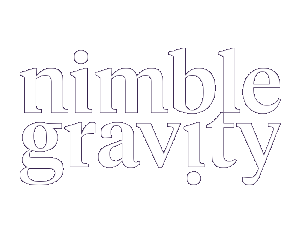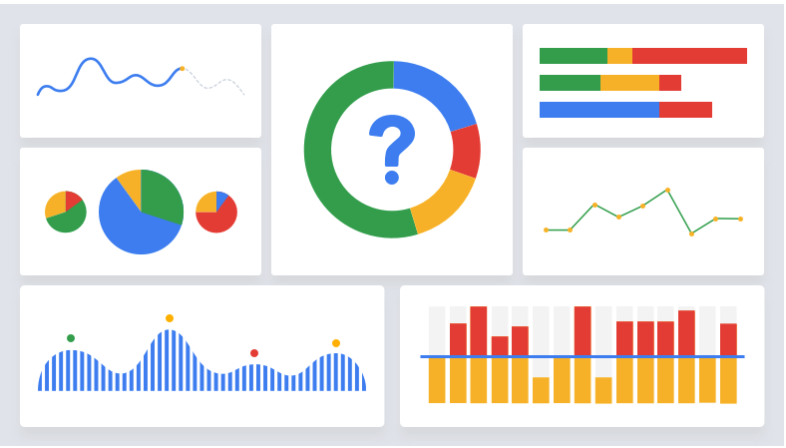Scaling New Heights: Expanding Your Insights with Third-Party Data
In today's data-driven landscape, relying solely on internal data is like attempting to scale a mountain without looking at a map – you might miss the best route to the summit. To truly harness the power of data analytics and gain a competitive edge, part of many company’s journey is to look beyond their own environment and embrace third-party data (also known as “alt-data”). By enriching your datasets with external data, you open the trail to enhanced business intelligence, a broader and deeper understanding, and more informed decision-making.
Exploring Beyond Your Data Base Camp
Your internal data is undeniably valuable, serving as the base camp for your operations and strategies. However, integrating external data sources can elevate your data analytics to new heights. Third-party data provides a broader perspective, offering insights into market trends, consumer behaviors, and competitive dynamics that internal data alone cannot reveal. This data enrichment allows you to uncover hidden opportunities, anticipate market shifts, and make data-driven decisions with greater confidence.
Navigating Free and Paid Third-Party Data Trails
Third-party data comes in various forms, both free and paid, each offering unique value to your data integration efforts. Free data sources, such as government databases, offer a wealth of demographic and economic information. Institutions like the U.S. Census Bureau and the Bureau of Labor Statistics provide extensive datasets that can inform your market analysis and strategic planning. Open data platforms like data.gov also offer diverse datasets ranging from climate patterns to public health statistics, contributing to a richer understanding of the landscape in which your business operates. There are also more bespoke approaches to getting data such as making a FOIA (pronounced “Foya”) request, using the Freedom of Information Act which gives the public the right to request US government records.
Paid data sources provide specialized and in-depth insights that can significantly enhance your analytics. Financial data providers such as Bloomberg and Thomson Reuters offer market data crucial for timely decision-making. Consumer behavior insights from companies like Nielsen and Experian can give you a deeper understanding of purchasing habits and lifestyle segmentation, enabling more targeted marketing strategies. And there are thousands of specialty data sources that cover topics ranging from sentiment to foot traffic to to patents to eCommerce sales. Take a look at alternativedata.org for a more comprehensive list, or let us know what you’re looking for. If you can’t readily find it, we can often get it or even create it for you.
Timing Is Key: When to Integrate Third-Party Data
A common question arises: Should you incorporate third-party data before or after refining your internal data? The answer depends on your business's specific circumstances and objectives. If you're venturing into a new market or launching a new product, integrating external data early can provide immediate insights to inform your strategy. For startups or companies with limited internal historical data, third-party data can fill critical gaps, allowing for robust data-driven decision-making from the outset. And 3rd party data can often be cleaner and more readily used than internal data.
Conversely, ensuring your internal data is clean and well-structured before integrating external data can lead to smoother integration and more reliable analytics. A solid internal data foundation means that third-party data will enhance rather than complicate your analytics efforts. By prioritizing data quality and consistency within your organization first, you maximize the value of both internal and external datasets when they are eventually combined.
Building Bridges: How to Seamlessly Join Third-Party Data
Integrating datasets, whether they’re internal or external is often challenging – unfortunately there are very few universal standards when it comes to describing things like companies or places which makes bringing different data together challenging. Our process for doing that begins with a thorough data assessment. Evaluate the accuracy, completeness, and relevance of the third-party data to ensure it aligns with your business needs. Compliance with data privacy laws and licensing agreements is also crucial to avoid legal pitfalls.
Identifying common paths between datasets is the next critical step. Look for shared markers such as customer names, domains, or geographic information that can serve as initial connection points. When direct matches aren't available, data matching techniques like fuzzy matching can help bridge the gaps.
It’s also often critical to consider these markers over time, as they can change. For example, if a company changes its name, merges with another company and moves its HQ address the join before and after each change must contemplate what changed and when.
Data transformation and standardization are essential to align different data formats and structures. This involves converting data types, synchronizing units of measure, and standardizing date formats. Consistent categorization, or taxonomy alignment, ensures that similar data points are classified uniformly across datasets.
Utilizing data integration tools and platforms can streamline this journey. Extract, Transform, Load (ETL or sometimes ELT) tools automate many aspects of data integration, reducing the potential for human error. Data lakes or data warehouses provide centralized repositories capable of handling large volumes of diverse data, facilitating easier access and analysis.
Finally, validation and testing are crucial to ensure the integrity of the integrated data. Starting with pilot projects allows you to test compatibility on a smaller scale before full implementation. Continuous monitoring helps identify and rectify discrepancies or data drift over time, maintaining the reliability of your analytics.
Reaching the Summit: Next Steps After Integration
With third-party data successfully integrated, you're equipped to uncover deeper insights through advanced analytics. Predictive modeling can enhance forecasting accuracy by incorporating external variables, while machine learning algorithms can reveal patterns and trends not immediately apparent through traditional analysis.
Data visualization becomes a powerful tool at this stage. Creating interactive dashboards enables stakeholders to engage with the data actively, fostering a culture of data-driven decision-making. Storytelling with data helps communicate complex insights in a compelling and accessible manner, highlighting the impact of new findings on your business strategies.
Strategic implementation of these insights is where the real transformation occurs. Whether optimizing product development, refining marketing efforts, or improving operational efficiencies, the enriched data provides a solid foundation for making informed choices that drive growth and innovation.
Embracing a World of Data
Integrating third-party data isn't just about adding more information to your databases; it's about enhancing your perspective and expanding your horizons. By embracing data integration strategies that include external sources, you position your business to stay ahead of industry trends, understand your customers better, and outperform competitors. In the realm of data management, those who adapt and innovate are the ones who reach the highest peaks.
Ascend with Nimble Gravity
At Nimble Gravity, we specialize in guiding businesses through the complexities of data integration and analytics. Our expertise in data management and data integration strategies ensures that we can craft personalized solutions aligned with your specific goals and challenges. We understand that every organization is unique, and we're committed to helping you harness the power of data to achieve your objectives.
Ready to Elevate Your Data Analytics Capabilities?
Embarking on the journey to integrate third-party data may seem daunting, but you don't have to navigate this terrain alone. Contact us today, and let's explore how we can support your efforts to leverage data-driven insights for sustained success. Together, we'll develop a roadmap that not only addresses your current needs but also positions you for future opportunities.
In the vast landscape of data, those who dare to explore beyond familiar trails often discover the most valuable vistas. By embracing third-party data integration, you're setting your sights on summits filled with potential and prosperity. Are you ready to embark on this exhilarating climb?






.svg)








